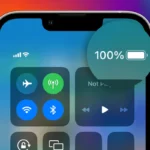Getting locked out of your iPad can be frustrating, especially when you need to access important information or use the device right away. Many people forget their passcodes due to infrequent use or setting up a new code they’re not familiar with yet. If you’re locked out of your iPad, you can reset it using recovery mode on a computer or through the Find My feature on another Apple device.
Don’t panic if you see the “iPad is disabled” message after too many incorrect passcode attempts. This is a normal security feature designed to protect your data from unauthorized access. You have several options to regain access, though they all require resetting your device to factory settings.
The good news is that as long as you remember your Apple ID and password, you can restore your data after the reset. If you’ve been making regular backups to iCloud or your computer, you won’t lose your photos, messages, and other important information when you reset your iPad to factory conditions.
⚠️ Important Note
- Erasing your iPad will delete all data (apps, photos, settings).
- If you’ve backed up to iCloud or a computer, you can restore your data after unlocking.
- There’s no way to bypass the passcode without erasing the device (Apple’s security measure).
📱 Step 1: Prepare Your Computer
You’ll need a Mac or Windows PC with the latest version of:
- Finder (macOS Catalina or later)
- iTunes (macOS Mojave or earlier, or Windows)
🔄 Step 2: Put iPad Into Recovery Mode
The button sequence depends on your iPad model:
- iPads without Home button (Face ID models):
- Press and hold the Top button and either Volume button until the power slider appears.
- Drag the slider to turn off.
- Hold the Top button while connecting to your computer until you see the Recovery Mode screen.
- iPads with Home button:
- Hold the Top (or Side) button until the power slider appears.
- Turn off the iPad.
- Hold the Home button while connecting to your computer until Recovery Mode appears.
💻 Step 3: Restore Your iPad
- On your computer, open Finder or iTunes.
- Locate your iPad in the sidebar.
- Choose Restore (this erases the iPad and installs the latest iPadOS).
- Wait while the process completes — your iPad will restart as new.
☁️ Step 4: Set Up Your iPad
- After restart, follow the on-screen setup steps.
- Sign in with your Apple ID.
- Restore from iCloud backup, computer backup, or set up as new.
🛠️ Extra Tips
- If your computer doesn’t recognize the iPad, try a different USB cable or port.
- If the restore takes more than 15 minutes, your iPad may exit recovery mode — repeat Step 2.
- You can also erase your iPad remotely via iCloud.com > Find My iPad if “Find My” was enabled.
📌 Bottom Line
If you’re locked out of your iPad, the only solution is to erase it and restore through Recovery Mode or iCloud. With a backup, you can get your data back; without one, you’ll still regain access to a fresh iPad.
👉 Official Apple guide: If you forgot your iPad passcode.
Key Takeaways
- Use recovery mode with a computer or the Find My feature to reset a locked iPad.
- Always back up your iPad regularly to avoid losing data if you need to reset it.
- Set up easier-to-remember passcodes or use Face ID/Touch ID to prevent future lockouts.
Understanding iPad Lockout
Getting locked out of your iPad happens to everyone at some point. These lockouts can range from simple passcode forgetfulness to more serious security measures triggered by multiple failed attempts.
Types of iPad Lockouts
When you can’t access your iPad, you might face different lockout messages. The most common is the standard passcode screen where you need to enter your 4 or 6-digit code. If you enter the wrong passcode several times, your iPad will display a “device unavailable” message.
For more serious cases, you might see a “security lockout” screen. This happens after multiple wrong passcode attempts. The lockout time increases with each failed try:
- 5 failed attempts: 1-minute lockout
- 6 failed attempts: 5-minute lockout
- 7 failed attempts: 15-minute lockout
- 8-9 failed attempts: 1-hour lockout
After 10 wrong tries, your iPad might become completely disabled, requiring a full reset.
Causes of iPad Lockouts
The most common reason for an iPad lockout is simply forgetting your passcode. This happens more often than you might think, especially with devices you don’t use daily.
Children accidentally entering wrong passcodes repeatedly can trigger security lockouts. This often happens when kids are playing with an iPad and don’t realize they’re entering incorrect codes.
System updates can sometimes cause lockout issues if there’s a glitch during the update process. Screen damage that creates “phantom touches” might register as failed passcode attempts.
For security reasons, Apple doesn’t provide any backdoor methods to bypass these lockouts. If you’ve forgotten your iPad password, you’ll need to follow specific reset procedures to regain access.
Immediate Steps to Take
When locked out of your iPad, quick action can help you regain access without losing important data. Several options exist depending on your specific situation and what resources you have available.
Verify Apple ID
If you can’t remember your iPad passcode, first try to verify your Apple ID credentials. This is often the fastest way to recover access. Your Apple ID is the same account you use for other Apple services.
Go to the Apple ID account page on another device. Try signing in with potential passwords you might have used. Apple gives you several attempts before locking the account.
If you remember your Apple ID password but not your device passcode, you can reset the iPad through iCloud. This works even if you don’t have physical access to a computer.
For those who’ve bought a used iPad that’s still linked to the previous owner’s account, you’ll need to contact them to remove their Apple ID credentials from the device.
Use Find My iPad
The Find My feature offers a simple solution when locked out of your iPad. This method works remotely and doesn’t require a computer connection.
On another device (phone, tablet, or computer), visit iCloud.com and sign in with your Apple ID. Click on “Find My” and select your iPad from the devices list.
Once your iPad appears on the map, select it and choose “Erase iPad.” This will remove everything including the passcode. After erasing, you can set up the iPad as new or restore from a backup.
Important: This method only works if:
- Find My was enabled before you got locked out
- You know your Apple ID password
- The iPad has internet connection
If your iPad is offline, the erase command will run the next time it connects to the internet.
Recovery and Unlock Methods
Getting back into a locked iPad can be frustrating, but several methods exist to help you regain access. These approaches use different tools depending on your situation and what resources you have available.
Using iTunes for Recovery
When you’re locked out of your iPad, iTunes offers a reliable way to reset it. First, connect your iPad to a computer with iTunes installed using a USB cable.
For most iPads, you’ll need to put the device in recovery mode. This process varies by model:
- For iPads with Home button: Press and hold both the Home and Top buttons until the recovery screen appears
- For iPads without Home button: Press Volume Up, then Volume Down, then hold the Top button
Once in recovery mode, iTunes will detect your device and show a pop-up. Choose the Restore option to erase everything and remove the password. This process will install the latest iOS version.
If you have a backup, you can restore your data after the iPad resets. Remember that this method erases all data on the iPad.
Utilizing iCloud’s Features
If you don’t have access to a computer, iCloud provides a convenient way to unlock your iPad remotely. This method requires you to know your Apple ID and password.
Visit iCloud.com from any web browser and sign in with your Apple ID. Navigate to “Find My” and select your locked iPad from the devices list.
Click “Erase iPad” to remove the passcode and all content. This works even when your iPad is not connected to the internet, as it will erase itself when it next connects.
After the erase is complete, you can set up your iPad as new or restore from an iCloud backup. This method is helpful when you have no physical access to your device or access to a computer.
Bypassing with iPad Unlocker Software
When other methods don’t work, third-party iPad unlocker software can help. Programs like EaseUS MobiUnlock offer specialized tools to bypass a forgotten passcode.
To use iPad unlocker software:
- Download and install the program on your computer
- Connect your iPad using a USB cable
- Follow the on-screen instructions to put your iPad in recovery mode
- Let the program remove the password
These tools can often handle disabled iPads and devices stuck in other lock situations. Most software requires payment, but many offer free trials.
Keep in mind that third-party unlocking software should be downloaded only from trusted sources to avoid malware. After unlocking, you’ll need to set up your iPad again and restore your data from a backup.
Resetting Your iPad
When locked out of your iPad, you have several options to regain access. Each method will erase your device and remove the forgotten passcode, but requires different tools and approaches.
Entering Recovery Mode
Recovery mode is a powerful way to reset your iPad when you can’t remember your passcode. This method requires a computer with iTunes or Finder.
For iPads with a Home button, press and hold both the Home and Top buttons until you see the recovery mode screen. On newer iPads without Home buttons, quickly press and release the volume up button, then volume down button, and finally press and hold the top button until the recovery screen appears.
Once in recovery mode, connect your iPad to a computer. iTunes or Finder will detect your device and offer to restore it. Click “Restore” to erase everything and reset it to factory settings.
Remember that this erases all data, so having a backup is essential. After the restore, you’ll need to set up your iPad as new.
Remote Wipe via iCloud
If you have “Find My iPad” enabled, you can erase your locked iPad remotely through iCloud.
To do this:
- On another device, go to iCloud.com
- Sign in with your Apple ID credentials
- Click on “Find My”
- Select your iPad from the list of devices
- Click “Erase iPad”
The iPad will erase itself the next time it connects to the internet. This method is ideal if you don’t have a computer handy or can’t physically access your iPad.
After the wipe completes, your iPad will restart and walk you through the setup process. You’ll need your Apple ID password during setup to remove Activation Lock.
Factory Reset
For a complete fresh start, a factory reset is the most thorough option. This returns your iPad to the state it was in when first purchased.
If you can’t access your iPad due to a forgotten passcode, you’ll need to use either recovery mode or iCloud to perform the factory reset. Both methods completely erase your device.
After the reset, you’ll set up your iPad like new. You can either restore from a backup (if you have one) or start fresh. The setup process will guide you through:
- Language selection
- Region settings
- Wi-Fi connection
- Apple ID login
- Setting a new passcode
Your iPad will be completely wiped, removing the forgotten passcode but also all apps, photos, and other data.
Advanced Security Features
Apple’s iPad devices come with several advanced security features to protect your data. These features include fingerprint and face recognition, protection against theft, and regular software updates to keep your device safe.
Understanding Biometric Locks
Touch ID and Face ID are Apple’s biometric security systems that make unlocking your iPad quick and secure. Touch ID uses your fingerprint to verify your identity. It’s available on many iPad models including iPad Air and iPad mini.
Face ID is the more advanced system found on newer iPad Pro models. It uses the TrueDepth camera to create a detailed map of your face. This system is highly secure and works even in low light conditions.
If you’re locked out of your iPad and can’t use biometrics, you’ll need to enter your passcode. It’s important to remember that after several failed biometric attempts, iPadOS will require your passcode anyway.
Setting up alternative appearances in Face ID settings can help prevent lockouts. You can also add multiple fingerprints to Touch ID for better accessibility.
Dealing with Activation Lock
Activation Lock is a powerful anti-theft feature that turns on automatically when you enable Find My on your iPad. This feature prevents anyone from using your iPad if it’s lost or stolen.
If you bought a used iPad that shows an Activation Lock screen, you’ll need the previous owner’s Apple ID and password. Without these credentials, the iPad remains locked and unusable.
When facing an Activation Lock:
- Contact the previous owner if possible
- Ask them to remove the device from their Apple ID remotely
- If that’s not possible, you’ll need proof of purchase to contact Apple Support
For iPads with iPadOS 15.2 or later, the Security Lockout feature provides a way to reset your device using your Apple ID credentials when you’ve forgotten your passcode.
iPadOS Security Updates
iPadOS security updates are critical for protecting your iPad against new threats. Apple regularly releases updates that patch security vulnerabilities and add new protection features.
Staying current with iPadOS updates helps prevent lockouts caused by security issues. Recent versions have improved the recovery options for locked devices, making it easier to regain access when you forget your passcode.
Key security improvements in recent iPadOS versions include:
- Enhanced password management
- Better two-factor authentication
- Improved Security Key support
- More recovery options
If you’re experiencing a lockout, checking if your iPad needs a software update might help. Sometimes, security bugs can cause unusual lock behaviors that updates fix.
Always back up your iPad regularly to avoid losing data if you need to reset your device due to a lockout situation.
Preventive Measures and Best Practices
Taking steps to protect your iPad access before problems occur can save you significant time and stress. Simple habits like regular backups and proper password management make a big difference in maintaining device security.
Creating Regular Backups
Backing up your iPad is crucial for avoiding data loss if you get locked out. iCloud backups happen automatically when your device is charging, connected to Wi-Fi, and locked. To check if backups are enabled:
- Go to Settings > [your name] > iCloud > iCloud Backup
- Toggle iCloud Backup to ON
- Tap “Back Up Now” for an immediate backup
You can also back up through iTunes on a computer. Connect your iPad, open iTunes, select your device, and click “Back Up Now” under the Summary tab.
The best backup schedule includes:
- Weekly manual backups before installing updates
- Automatic daily iCloud backups
- Extra backups before traveling
Having recent backups ensures you’ll lose minimal data if you need to reset your locked iPad.
Managing Screen Time Passcodes
The Screen Time passcode is separate from your device passcode and can cause lockout issues if forgotten. To set up or change this passcode:
- Go to Settings > Screen Time
- Select “Use Screen Time Passcode”
- Enter a memorable but secure code
- Store this passcode in a password manager or secure note
If you share your iPad with family members, especially children, Screen Time passcodes help control access to certain apps and features.
Consider writing down your Screen Time passcode and storing it in a secure location, separate from where you keep your iPad passcode information. This separation adds an extra layer of security.
Removing MDM Profiles
Mobile Device Management (MDM) profiles are often installed on work or school iPads and can restrict certain actions. If you own the device and need to remove MDM, follow these steps:
- Go to Settings > General > Profiles & Device Management
- Tap on the MDM profile
- Select “Remove Management”
- Enter the required password if prompted
Note that removing MDM without authorization on company devices may violate policies. Always check with your IT department first.
For personal devices with unwanted MDM profiles, a factory reset might be necessary if you can’t remove the profile normally. Back up your data first using the methods described above.
Troubleshooting Common Issues
When you’re locked out of your iPad, there are several ways to regain access. These solutions range from basic reset attempts to using recovery mode with a computer.
Resolving iPad Lock Screen Problems
If you’re facing an iPad lock screen issue, try these simple fixes first. Start by making sure your iPad has enough battery power. A low battery can cause unresponsive screens.
For a frozen lock screen, force restart your iPad. On newer models without a Home button, press and quickly release the Volume Up button, then Volume Down button, then hold the Top button until you see the Apple logo. On older models with a Home button, hold the Home and Top buttons together.
If Touch ID isn’t working, clean the sensor and your fingers. Dust or oil can prevent proper recognition.
Sometimes removing your screen protector can help if it’s interfering with touch sensitivity. Try this if your screen doesn’t respond to swipes or taps.
Bypassing Forgotten Passcodes
If you’ve forgotten your iPad passcode, you’ll need to erase your device. This is the only way to remove the passcode protection.
You can use a computer to put your iPad into recovery mode:
- Connect your iPad to a computer
- Force restart your iPad while connected
- When you see the recovery mode screen, choose “Restore”
For newer iPad models:
- Press Volume Up button quickly
- Press Volume Down button quickly
- Hold the Top button until you see recovery mode
For older models with Home buttons:
- Hold Home and Top buttons together until recovery mode appears
After restoring, you can set up your iPad again and restore your data from a backup if you have one.
Fixing Security Lockout Errors
When you see “iPad is disabled” or “security lockout” on your screen, it means too many incorrect passcode attempts were made. The only solution is to erase your iPad.
To fix this, use recovery mode with a computer:
- Connect to Mac or PC with iTunes (on Windows or older Macs) or Finder (newer Macs)
- Put iPad in recovery mode using the button combinations mentioned above
- Select “Restore” when prompted
If you don’t have a computer, you can use Find My iPad through iCloud.com to erase remotely. Sign in with your Apple ID, select your iPad, and choose “Erase iPad.”
Remember that all these methods will delete your data. Having regular backups to iCloud or your computer is important to avoid losing your information.
Frequently Asked Questions
Getting locked out of your iPad can be stressful. Here are answers to common questions that can help you regain access to your device quickly.
How can I unlock my iPad if I have forgotten my passcode and don’t have access to a computer or iTunes?
Without a computer, your options are limited. You can use another iOS device to erase your iPad through Find My if it’s enabled on your locked device.
You’ll need to sign in to iCloud.com or the Find My app on another device using your Apple ID. Then select your locked iPad and choose the “Erase iPad” option.
If Find My isn’t set up, you’ll need to find access to a computer eventually to restore your device.
What steps should I follow to reset an iPad without the passcode?
To reset your iPad without a passcode, you’ll need to put it in recovery mode. First, connect your iPad to a computer and open iTunes or Finder (on macOS Catalina or later).
While connected, force restart your iPad by holding the appropriate buttons for your model until the recovery mode screen appears.
When prompted, choose “Restore” to erase all content and settings. This will delete all data from your iPad, but you can restore from a backup afterward.
Is it possible to regain access to an iPad without the associated Apple ID?
Regaining access without the Apple ID is challenging by design. If you bought the iPad secondhand and it’s still linked to the previous owner’s Apple ID, contact them to remove it from their account.
If you’re the original owner but forgot your Apple ID, visit iforgot.apple.com to recover your account information.
For company-owned devices, an IT administrator might help bypass certain restrictions.
How can one retrieve an iPad from locked mode when the passcode is unknown?
When your passcode is unknown, you’ll need to restore the device using a computer. This process erases all content but lets you set up the iPad again.
Connect your iPad to a computer with iTunes or Finder. Put the device in recovery mode and select the restore option.
After restoration, you can set up the iPad as new or restore data from a previous backup.
What are the official Apple support options for unlocking a passcode-protected iPad?
Apple Support can’t bypass your passcode for security reasons. They’ll direct you to restore your device using iTunes or Finder on a computer.
Visit an Apple Store with proof of purchase if you need hands-on help with the restoration process.
You can also contact Apple Support by phone or chat for guidance through the recovery mode process if you’re having trouble.
What should be done if the screen time passcode is forgotten on an iPad?
If you’ve forgotten your Screen Time passcode, you can reset it using your Apple ID and password. Go to Settings > Screen Time > Change Screen Time Passcode > Forgot Passcode.
Enter your Apple ID credentials when prompted to create a new Screen Time passcode.
For older iOS versions, you might need to erase your device and set it up again to remove the Screen Time passcode.







